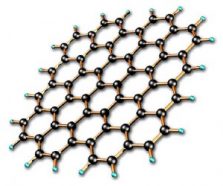Prizes award big ideas about small things
Carbon and IVF win big in this year’s Nobel prizes
Musicians win Grammys. Writers win Pulitzers. Moviemakers win Oscars. Scientists have the Nobel Prizes.
A Nobel Prize, which is awarded by the Nobel Foundation in Sweden, may be the most important recognition a scientist can receive in his or her lifetime. The prize is also lucrative: This year, each prize came with 10 million Swedish kronor, which is about $1.5 million.
Six Nobel Prizes are given each year, with three of those prizes going to scientists who have done outstanding work. The science categories include chemistry, physics, and physiology or medicine. Scientists from any country are eligible, but must be nominated.
Nominations are by invitation only — which means no, you may not nominate your science teacher. Fun fact: Nominations are sealed for 50 years, which means we won’t know who was nominated this year until the year 2060.
This year, awards week began on October 4, when Robert Edwards, a British researcher, was named the winner for the award in physiology or medicine. Edwards received the award for developing IVF, or human in vitro fertilization therapy. IVF is a treatment for infertility, which is the inability to conceive a baby. It is reported that more than 10 percent of all childbearing couples worldwide experience infertility.
In IVF, eggs are removed from a woman’s uterus and fertilized in a laboratory with sperm. If the fertilization is successful, the embryo is returned to the mother. Louise Brown, the first healthy baby born after IVF, was born in 1978. Since then, more than 4 million babies have been born after IVF.
Awards week continued on October 5, when physicists Andre Geim and Konstantin Novoselov were named the winners of the prize in physics. Geim and Novoselov, who were born in Russia but now do research in the United Kingdom, are pioneers in the study of graphene, a material that can be made only in the laboratory. Graphene is strong — 200 times stronger than steel.

Geim and Novoselov published their first study of graphene in 2004. Since then, almost 50,000 papers have been published on the wonderstuff. Graphene is a good conductor with low resistance, which means it may change the future of electronics and be used in gadgets requiring conductors that are both strong and small.
On October 6, the winners of the chemistry prize were announced. Richard Heck, Ei-ishi Negishi and Akira Suzuki will share the prize for coming up with a way to get carbon atoms to bond with other carbon atoms. Their technique is now widely used in many different areas of chemistry, and it helps scientists build complex and extremely useful substances from molecules that contain carbon.
“This is fundamental carbon chemistry at its best,” Joseph Francisco told Science News. Francisco is president of the American Chemical Society in Washington, D.C.
Bonds between carbon atoms are very stable, which means they’re hard to break. But they’re also hard to make — especially if the carbon atoms you want to bring together are in separate molecules.
The secret to success, for Heck, Negishi and Suzuki, was to use palladium, a metal, as a sort of matchmaker that brings carbons together. This method is called “palladium-catalyzed cross coupling.” It is particularly important in synthetic organic chemistry, which is the science of taking carbon molecules and forming new, human-made substances, such as medicines.
Heck is American, and both Negishi and Suzuki are Japanese citizens. Different versions of their chemical reactions are named for the scientists. If you study organic chemistry, you may use the Heck reaction or the Suzuki reaction one day.
The Nobel Prizes are named after Alfred Nobel, a brilliant inventor whose best-known invention is dynamite. After Nobel’s death in December 1896, his will was read — and left the bulk of his fortune to creating the Nobel Prizes. His family was furious, but Nobel created a legacy that to this day honors the achievements of scientists and other great thinkers.







